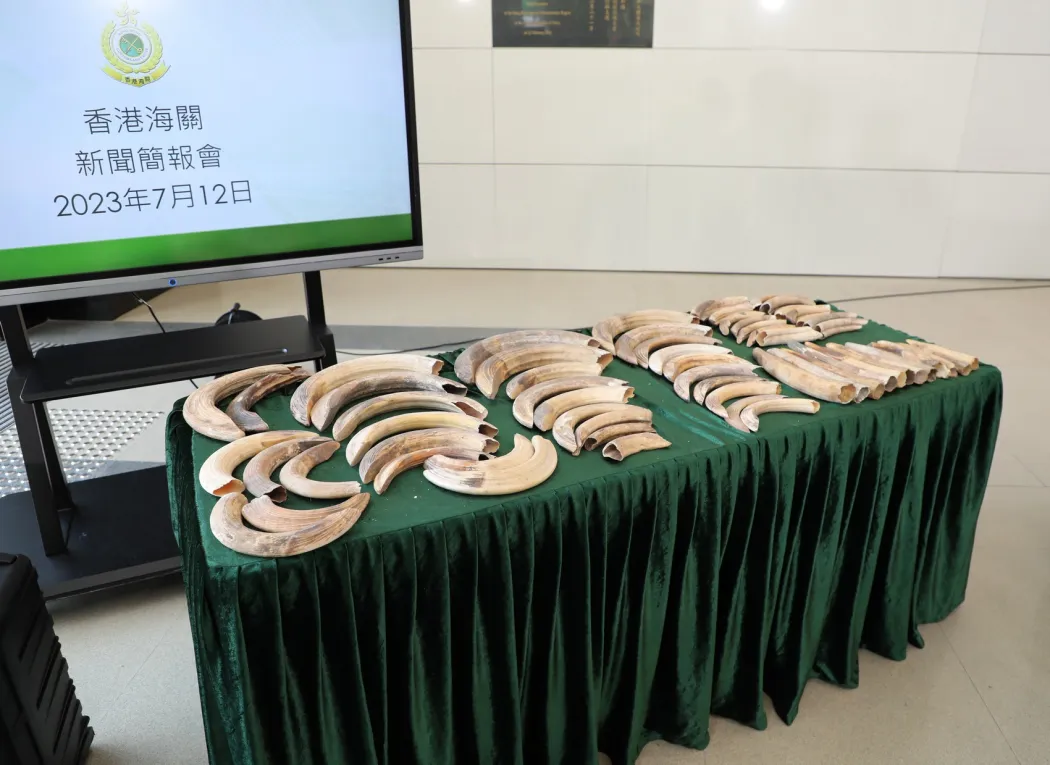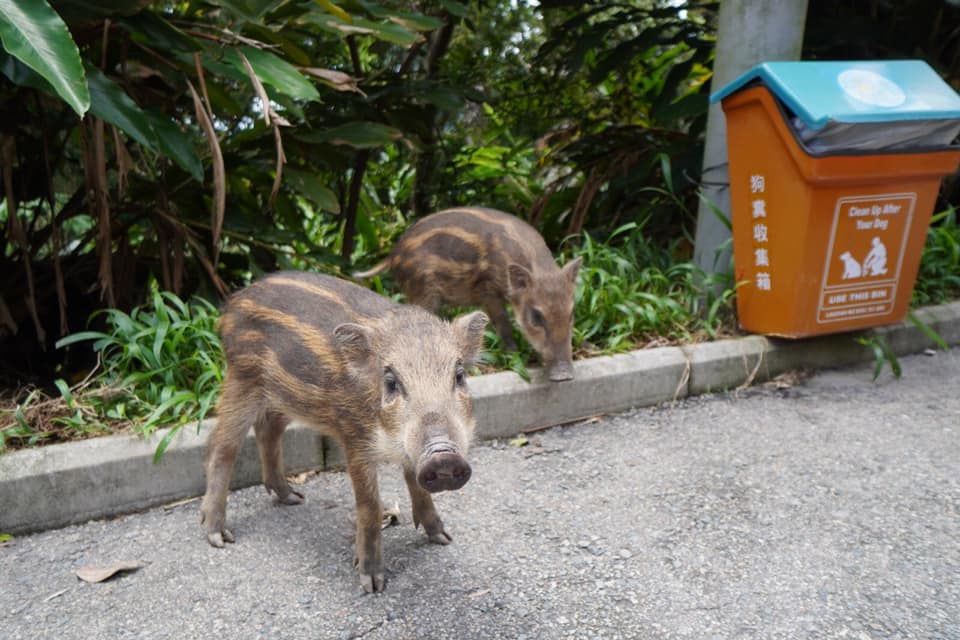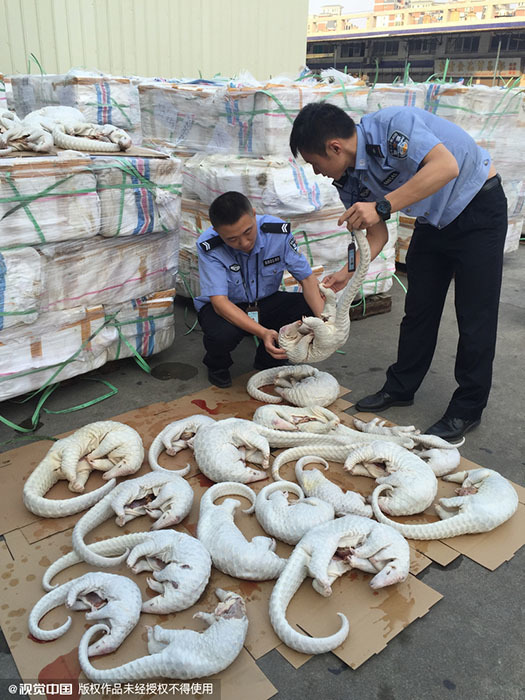Hong Kong customs officers have intercepted a shipment of thousands of live turtles and tusks from protected hippos destined for mainland China. The smugglers were feeding an insatiable Chinese demand for animals’ bodies.

With the dramatic rise of China in recent decades has come the emergence of hundreds of millions of middle-class and wealthy people able to consume to their hearts’ content. The great majority of them are carnivores. In addition to eating huge quantities of animal flesh, they consume animals’ fur, skin and body parts for fashion and so-called traditional Chinese medicine.
This burgeoning demand has stimulated an exponential rise in the exploitation of animals. Never before in human history has the suffering and killing of animals been so great. As China has risen, the welfare of animals has fallen.
To be sure, China is not unique in leaving animals hard done by. Americans, for example, devour animal flesh with gusto. Some Japanese still eat whales. That said, in few countries are so many species consumed as in China.
What makes China’s impact on animals especially unique is the utter scale of it. With more than one billion people hankering after the flesh and bodies of other species, monumental suffering is inevitable.
China’s growing meat consumption accounts for a quarter of the global total. Its per capita meat consumption greatly exceeds the global average. This will increase if people outside its cities follow official dietary guidelines.
Unfriendly treatment of animals
China employs a variety of venues and methods for inflicting suffering and death on animals, ranging from farms and zoos to animal experimentation and vivisection — to say nothing of polar bears and beluga whales on display in shopping malls.
Often the government in effect requires that pain be inflicted on animals. For example, until two years ago it was mandatory in China that all cosmetics be tested on animals, and many products, such as hair dyes and sunscreens, are still subject to this requirement.

Examples of callous treatment of animals abound, such as the horrific exploitation of moon bears, whose bile is cruelly extracted and sold as an unproven traditional potion (and which, incredibly, China’s National Health Commission recommends as a treatment for Covid-19); the way that sharks are slaughtered at sea, their fins sliced off before their bodies are thrown overboard to what must be an agonising demise; the horrendous conditions that canines endure before and while being butchered; and the abuse of pets of all sorts, which are crated and delivered directly to people’s homes by e-commerce stores.
Pet abandonment is a growing problem in China, including here in Hong Kong. In July last year a man on the mainland was videotaped dropping a puppy from his car while sitting in busy traffic. It was only in 2020 that police handled China’s first case of pet abandonment.
That same year, Shenzhen made headlines when it became the first Chinese city to ban the eating of dogs and cats. Yet, each year in China ten million dogs and four million cats are killed for human consumption, most notoriously during the annual Yulin Dog Meat Festival in Guangxi. Peter J. Li, author of Animal Welfare in China, recounts visiting a Chinese slaughterhouse where “Dogs stood in a pool of blood from other dogs that had been killed.”

Last August, a Chinese online influencer had no compunction about feasting on a baby great white shark — supposedly protected in China and listed as a vulnerable species — and then sharing videos of herself “tearing off large chunks of the animal’s barbecued meat.” Perhaps her behaviour is understandable given that dried baby shark flesh is sold in China as cat food.
It is possible that cats fattened on baby shark flesh have been eaten by people here in Hong Kong. In April a man was jailed for peddling “feline flesh for food” at his frozen-meat shop in Yau Ma Tei. That cat flesh was reportedly imported from Guangdong.
Farming animals comes with consequences
The huge scale of animal suffering in China is exemplified by its farms. Each farm animal is a sentient being that can experience pain and distress. This is worth bearing in mind when we tot up the number of farm animals in China, including 60 million cattle, over 300 million sheep and goats and nearly half a billion pigs.
While many pigs in China succumb to disease, well over one million are slaughtered every day. In Ezhou, Hubei province, a 26-storey factory-farm cages and slaughters 1.2 million pigs each year. It has been characterised as “China’s answer to its insatiable demand for pork.”

But the numbers of pigs that live and die in captivity in China is eclipsed by the number of chickens suffering the same fate. More than 16 billion of them are slaughtered there annually.
Each year China’s farms produce more than 92 million metric tons of flesh for human consumption — not counting the roughly 12 million tons imported annually. Each gram of flesh lifted by chopsticks may have come from a sentient being.
For some decades the Chinese government has encouraged more animal farming, including of wild animals. Conservationists argue that China’s wildlife farms are used as fronts to legalise taking animals from nature. As one of them put it, “breeding farms can turn wild animals into farmed animals and turn the illegal activities into legal ones.”
China’s wildlife protection law does not prohibit the captive breeding of wild animals. It encourages farmers to view wildlife as “economic animals” that bring financial benefit. This can have some very serious consequences.
The global Covid-19 pandemic, which has killed about 20 million people according to some estimates, “occurred via the live wildlife trade in China,” just like the SARS epidemic before it. According to an expert in Hong Kong, another pandemic is inevitable and “will come from animal hosts. We must … ban the sale of wild animals.”

Due to the Covid-19 outbreak, in 2020 Beijing ordered the closure of nearly 20,000 farms holding all manner of creatures — boars, civet cats (the source of SARS), foxes, hedgehogs, ostriches, porcupines, raccoon dogs, rats, wild birds and much more. The objective was to “eliminate the consumption of food of wild animals to safeguard people’s lives and health.”
However, by late 2022 restrictions on wildlife farming, notably of ducks, deer (likely carriers of Covid-19), mink (notorious harbours for Covid-19), raccoon dogs and silver foxes were being weakened, apparently to rekindle parts of the rural economy where local officials are incentivised to encourage all forms of business activity.
Exploiting animals far and wide
China’s growing demand for wildlife cannot be satiated domestically. Most of China’s own wild animals, including pangolins, tigers and bears, have all but disappeared. Consequently, Chinese businesses go abroad in search of wild animals: elephants, lions, pangolins and rhinos from Africa, bears from Canada and Russia, freshwater turtles from North America — and so on.

Demand among Chinese people for animals’ bodies has enormous adverse impacts on ecosystems around the world. Entire forests are felled to make way for soy farms to feed the swine whose flesh fills Chinese plates.
Chinese demand and habitat destruction have resulted in severe declines in aquatic creatures. Seas are stripped clean of fish. Sea turtles are illegally captured throughout Southeast Asia and as far afield as Africa, making China the largest sea turtle “exploitation hotspot.”
The diminutive dugong “sea cow” was recently declared functionally extinct in Chinese waters. It joins the Yangtze River dolphin as a casualty of China’s rapid economic growth. Hong Kong’s long-suffering pink dolphins may go the same way.
Hong Kong’s famous seafood restaurants are supplied with endangered fish that are often caught illegally — to say nothing of the suffering of fish that one can witness in the display tanks of restaurants and the shallow troughs at wet markets across the city.
The modernity of animal exploitation in China
Animals have suffered greatly throughout the span of Chinese history due to the transformation of vast wild areas to farmland, leading to the virtual elimination of once-ubiquitous creatures, such as Chinese elephants. Nevertheless, the country’s history includes official attempts to encourage harmonious human relations with animals and nature.
At different points in time, benevolence toward animals and vegetarianism were advocated by prominent Chinese scholars and officials. Some traditional Chinese philosophies discouraged actions that bring suffering to animals. Some Chinese dynasties outlawed cruelty toward farm animals, and some Chinese emperors sought to prohibit the consumption of dog meat.

The newfound ability of people in China to kill animals on a vast scale, with all the associated suffering that precedes it, is a particular feature of governmental policy since the advent of the People’s Republic in 1949. Judith Shapiro recounts “Mao’s war against nature,” exemplified by a misguided nationwide assault on sparrows in the 1950s, leading to a scourge of insect pests on farms because there were no more birds to keep them in check.
In today’s China, legal penalties for the maltreatment of animals are almost non-existent. To make matters worse, the government actively prevents the many people in China who are opposed to animal killing and suffering from organising and advocating for change.
Breaking the cycle of animal suffering?
In the 18th century, English philosopher Jeremy Bentham argued that animals have every bit as much right to be free of suffering as do humans. It has been half a century since publication of Animal Liberation, Peter Singer’s seminal book on animal rights. Surely Chinese officials can see the merits of these philosophers’ views, not least because they accentuate some traditional Chinese philosophies.
Just because China’s 1.4 billion people have the ability to inflict pain on animals, dismember them, eat their body parts and destroy their habitats does not justify acting on that ability. Neither can animal exploitation and suffering in other countries be used as justification. This becomes especially evident when we consciously contemplate the life and death experiences of the billions of animals on farms, in cages and in slaughterhouses across China.

It doesn’t have to be this way. The government in Beijing could use its vast propaganda machine to convince people that protecting animals’ welfare is a sign of good citizenship. It could change nationwide dietary guidelines to discourage consumption of meat and increase the capacity of farmers to care for animals.
It could enact new laws and regulations that equal, and ideally surpass, the highest standards of animal welfare in other countries. It could even learn from the Hong Kong police by creating a nationwide version of their Animal Watch Scheme, which investigates cases of animal cruelty, and it could measure police performance by how well they implement such a scheme.
Recently the US Department of Agriculture approved the sale of artificial meat, giving Americans the opportunity to eat flesh without the associated cruelty and suffering. If China could corner the market on this technology, much as it has done with, say, solar cells and facial recognition tools, maybe Chinese officials could end their support for corralling and killing billions of animals.
In 2021 a university student was arrested in Tsim Sha Tsui on suspicion of animal cruelty for putting salt on invasive snails. This surprising empathy for gastropods from the informant and the police may offer a tiny glimmer of hope amidst the plight of animal suffering across China — even if this news went unnoticed by local diners tucking into their Cantonese-style periwinkle snails in black bean sauce.
Snails may not cry, but if we could hear the cries of the billions of sentient animals suffering and dying in China right now, the wail would be deafening.
Support HKFP | Policies & Ethics | Error/typo? | Contact Us | Newsletter | Transparency & Annual Report | Apps
| HKFP is an impartial platform & does not necessarily share the views of opinion writers or advertisers. HKFP presents a diversity of views & regularly invites figures across the political spectrum to write for us. Press freedom is guaranteed under the Basic Law, security law, Bill of Rights and Chinese constitution. Opinion pieces aim to point out errors or defects in the government, law or policies, or aim to suggest ideas or alterations via legal means without an intention of hatred, discontent or hostility against the authorities or other communities. |
Help safeguard press freedom & keep HKFP free for all readers by supporting our team

More HKFP OPINION:
HKFP has an impartial stance, transparent funding, and balanced coverage guided by an Ethics Code and Corrections Policy.
Support press freedom & help us surpass 1,000 monthly Patrons: 100% independent, governed by an ethics code & not-for-profit.








